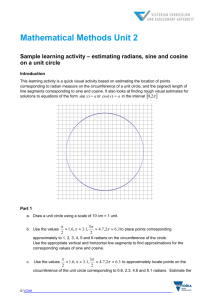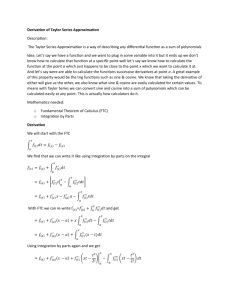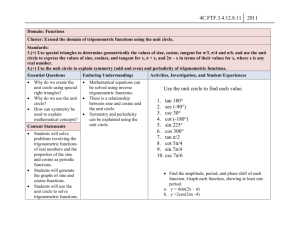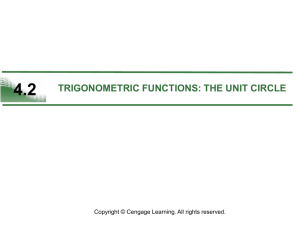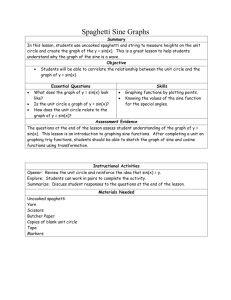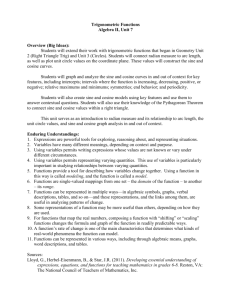unit circle lesson overview3
advertisement
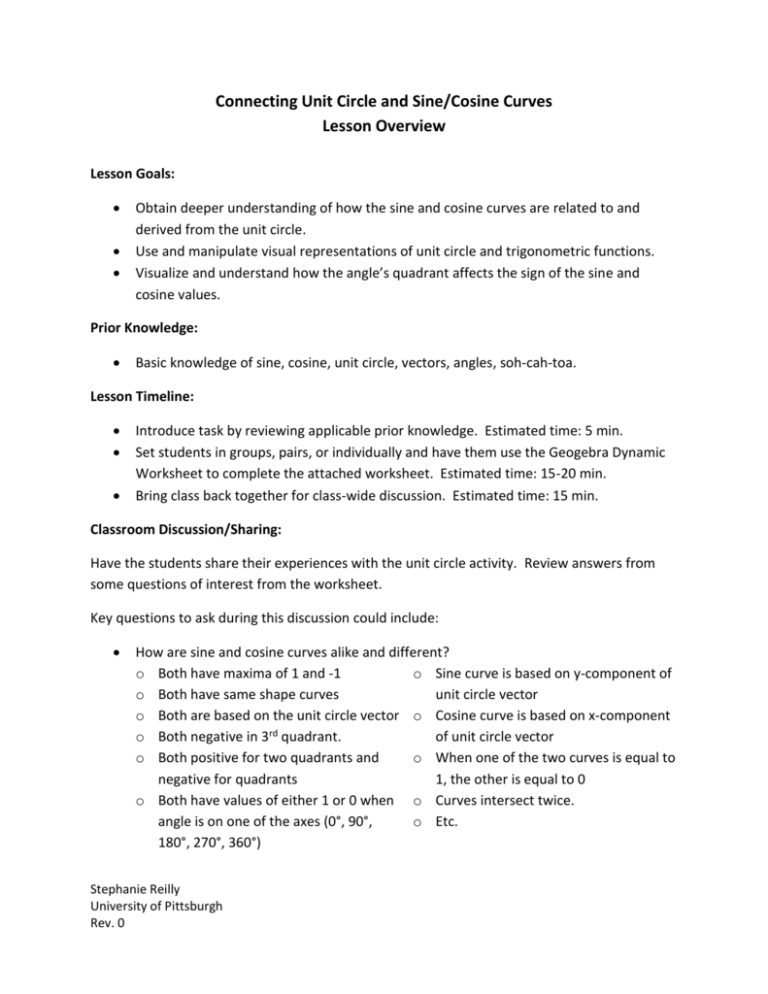
Connecting Unit Circle and Sine/Cosine Curves Lesson Overview Lesson Goals: Obtain deeper understanding of how the sine and cosine curves are related to and derived from the unit circle. Use and manipulate visual representations of unit circle and trigonometric functions. Visualize and understand how the angle’s quadrant affects the sign of the sine and cosine values. Prior Knowledge: Basic knowledge of sine, cosine, unit circle, vectors, angles, soh-cah-toa. Lesson Timeline: Introduce task by reviewing applicable prior knowledge. Estimated time: 5 min. Set students in groups, pairs, or individually and have them use the Geogebra Dynamic Worksheet to complete the attached worksheet. Estimated time: 15-20 min. Bring class back together for class-wide discussion. Estimated time: 15 min. Classroom Discussion/Sharing: Have the students share their experiences with the unit circle activity. Review answers from some questions of interest from the worksheet. Key questions to ask during this discussion could include: How are sine and cosine curves alike and different? o Both have maxima of 1 and -1 o Sine curve is based on y-component of o Both have same shape curves unit circle vector o Both are based on the unit circle vector o Cosine curve is based on x-component o Both negative in 3rd quadrant. of unit circle vector o Both positive for two quadrants and o When one of the two curves is equal to negative for quadrants 1, the other is equal to 0 o Both have values of either 1 or 0 when o Curves intersect twice. angle is on one of the axes (0°, 90°, o Etc. 180°, 270°, 360°) Stephanie Reilly University of Pittsburgh Rev. 0 How does the unit circle connect to the sin/cosine curves? o The value of sin(θ) is determined by the y-component of the unit circle vector at an angle of θ. The cos(θ) is determined by the x-component of the unit circle vector. How does this help you to determine the sine and cosine of angles? o Students should now be able to visualize the unit circle vector and resulting triangle to determine the cos and sin of an angle. For example, in considering the 90° angle, students can visualize that the vector is vertical, thus, the Δx value is 0, giving cos(90°) = 0. o Even for angles not on the axes, this visualization can help. Knowing from experience and prior knowledge that the sin(30°) is either 0.5 or 0.866 (√3/2), students can visualize the triangle on the unit circle at 30° and picture that the Δy is the small leg of the triangle and Δy is used to determine the sine. Thus, sin(30) must be 0.5, the smaller of the two choices. o Visualization helps with sense-making. It should now be clear why sine and cosine can never be greater than 1, why the cosine of angles between 90° and 180° are negative, why when cosine is 1, the sine must be zero and vice-versa, why the curves intersect exactly twice between 0 and 2π, etc. Extension in Next Day’s Lesson Use Pythagorean Theorem and the unit circle vector to show that sin 2(θ) + cos2(θ) = 1. Stephanie Reilly University of Pittsburgh Rev. 0
